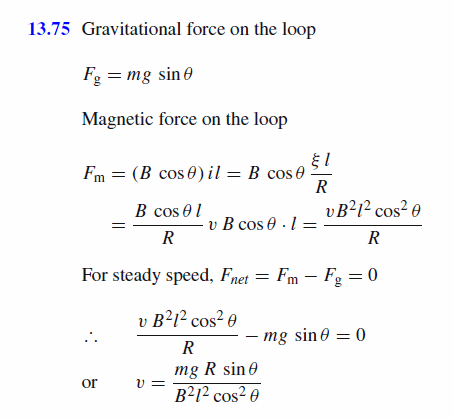
A square wire of length l , mass m and resistance R slides without friction on parallel conducting resistance rails as in Fig. 13.19. The rails are interconnected at the bottom by resistance rails so that R, the wire and rails form a closed rectangular loop. The plane of the rails is inclined at an angle T with the horizontal and a vertical uniform magnetic field B exists within the frame. Show that the wire acquires a steady velocity of magnitude v= (mgR sin T)/B^2l^2 cos^2T |
| New search. (Also 5349 free access solutions) |